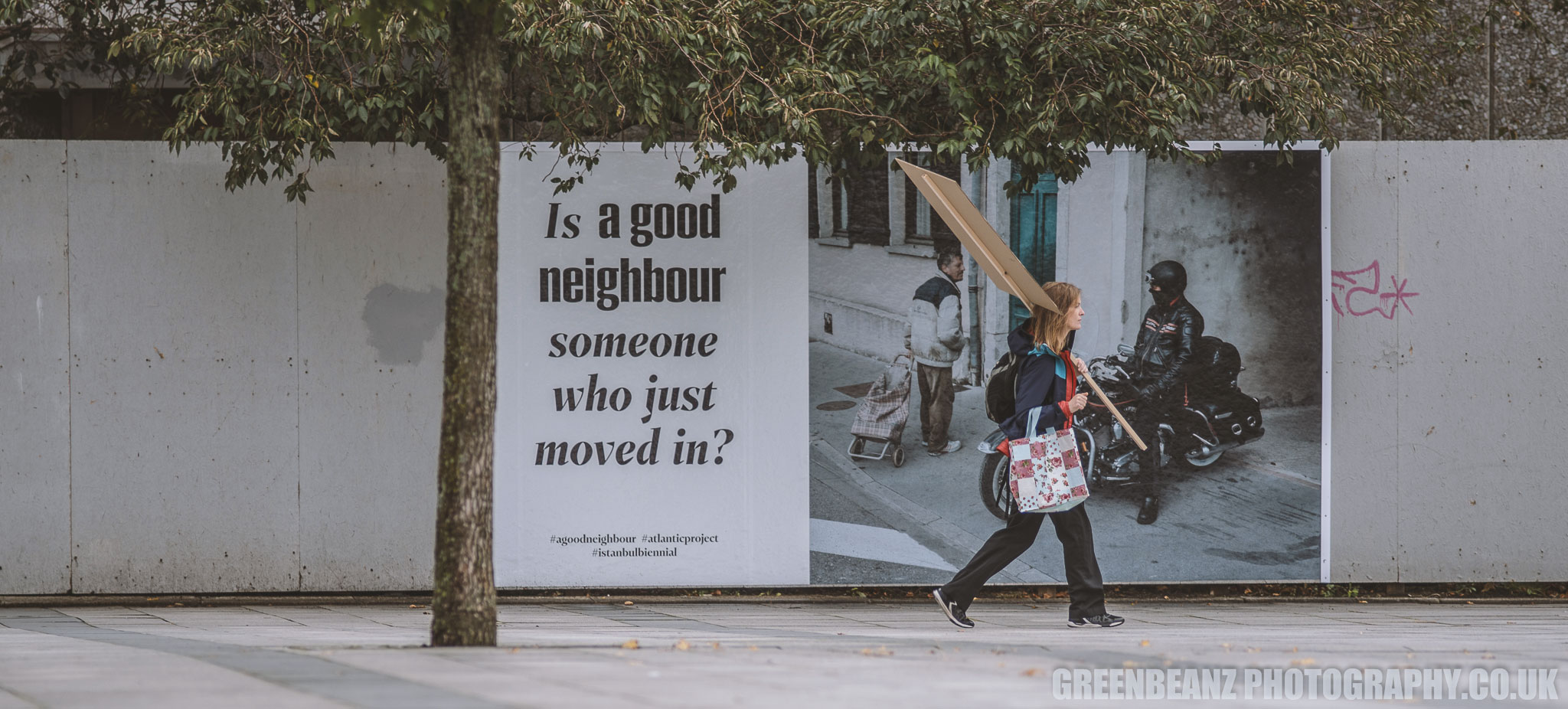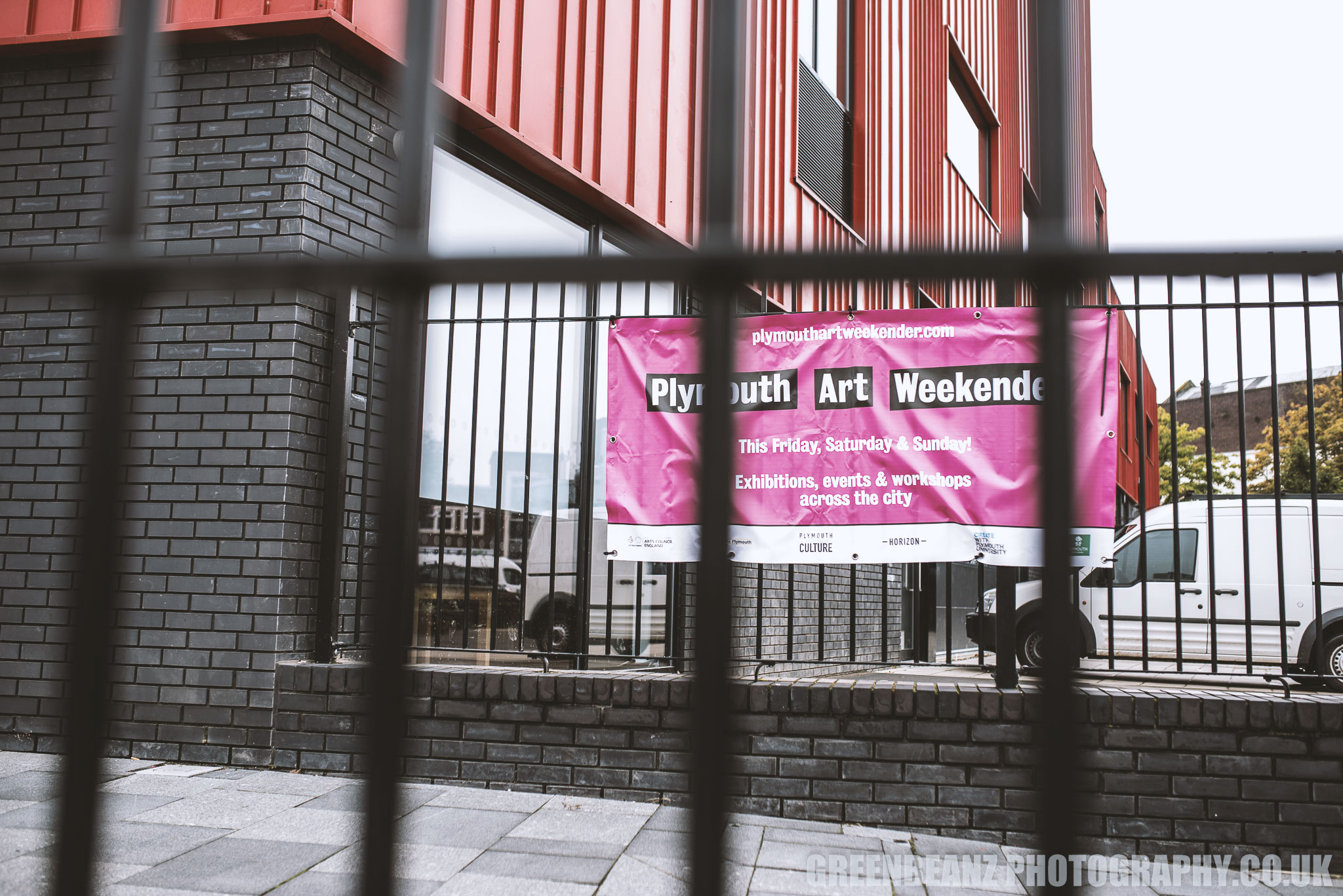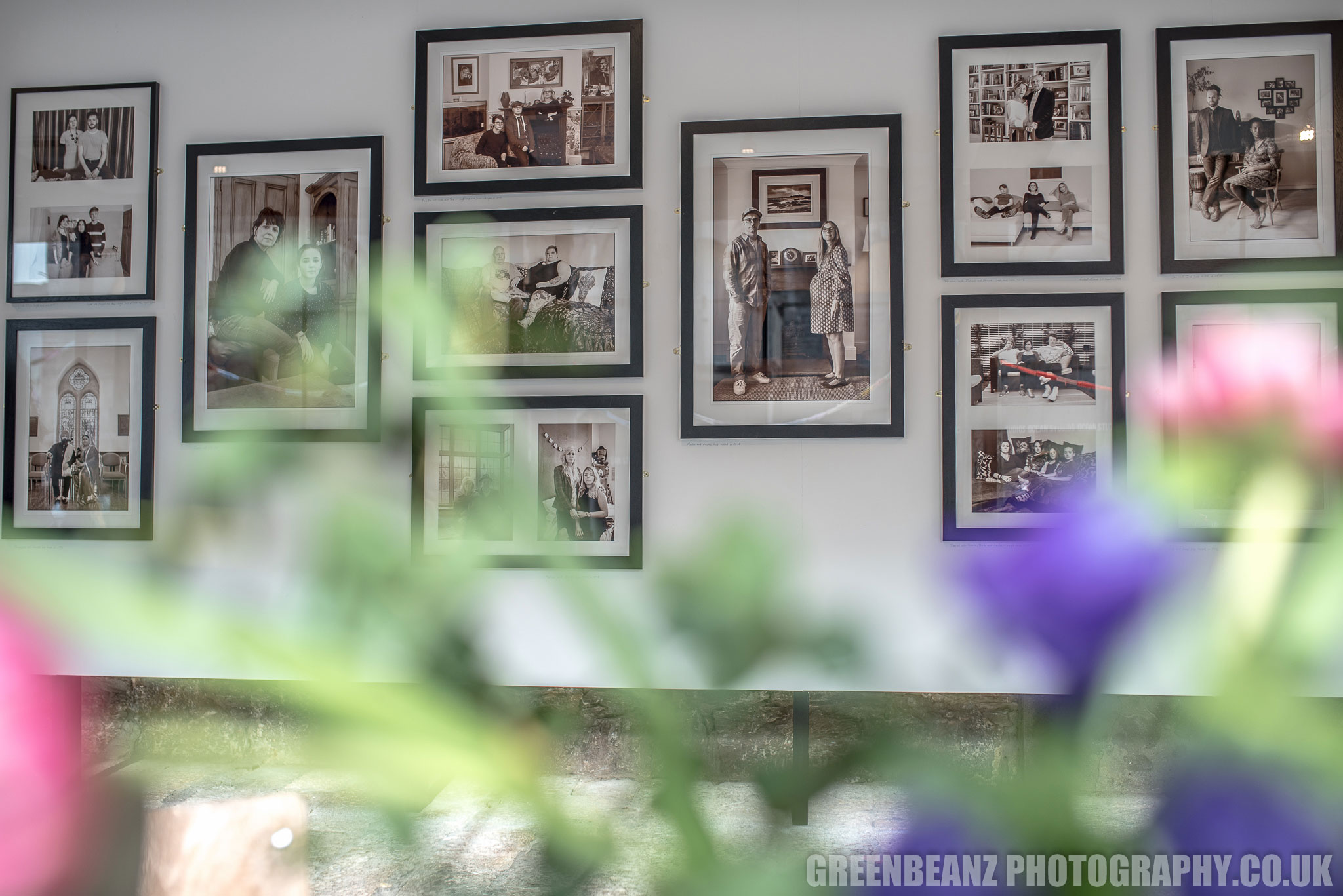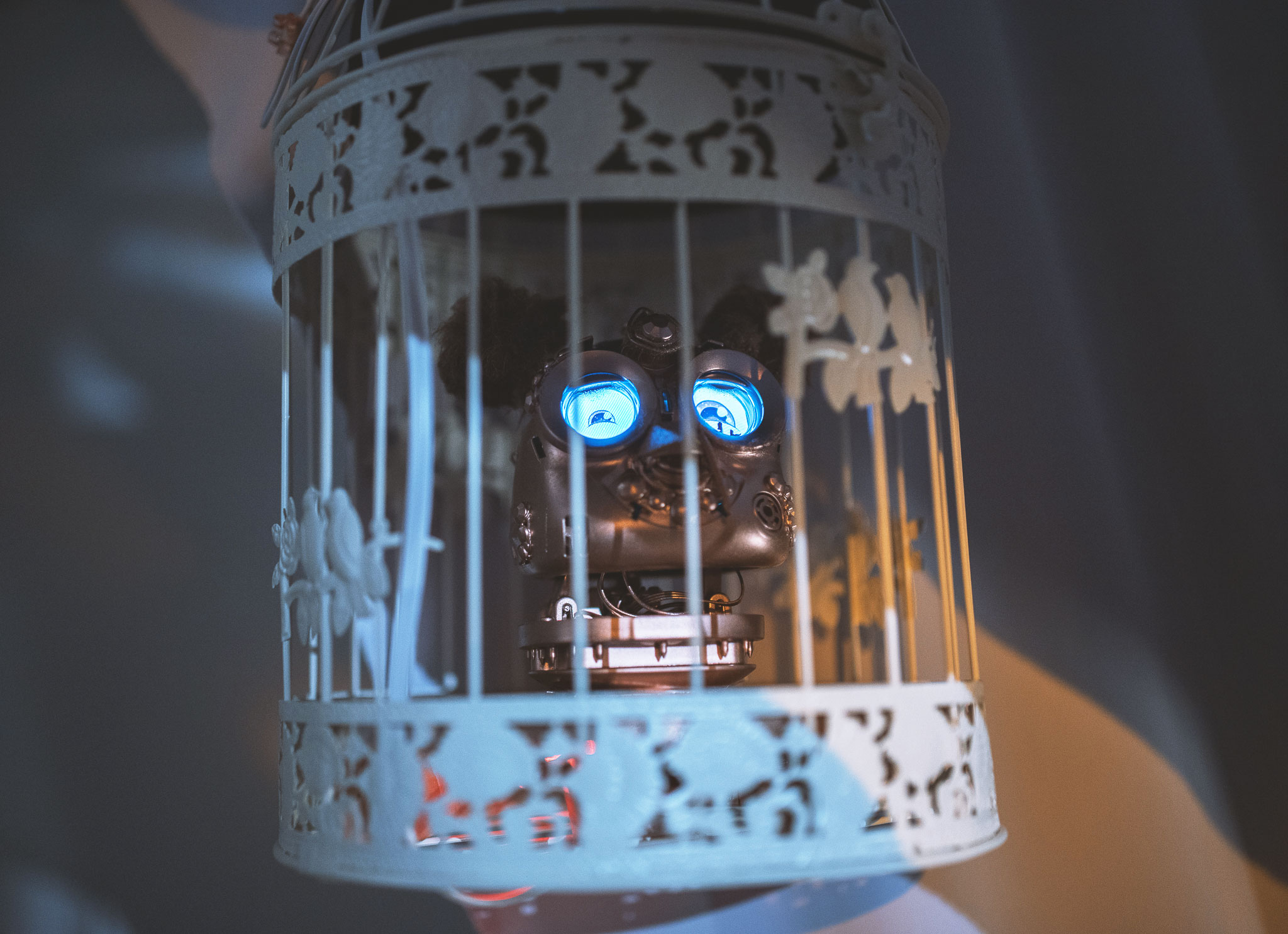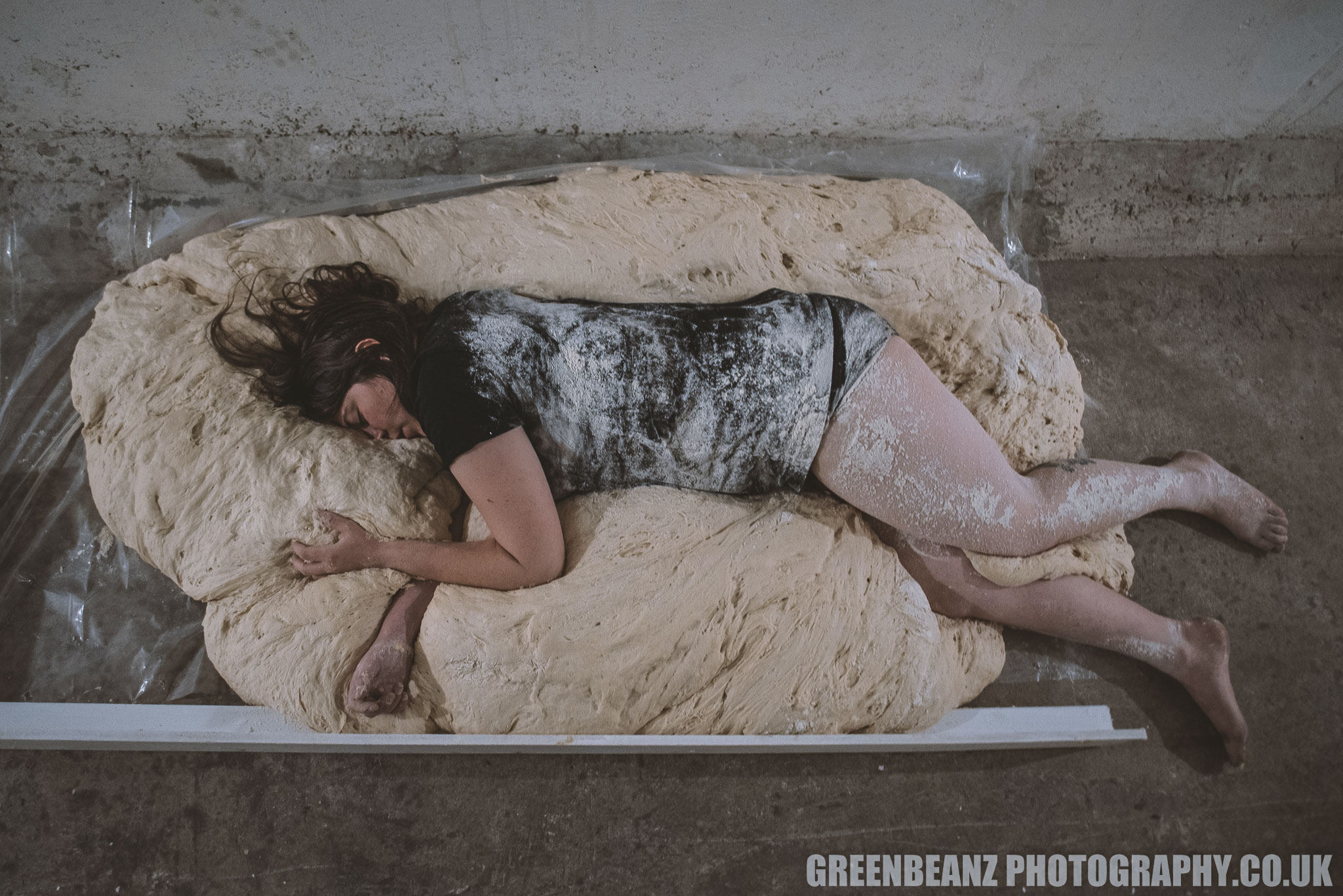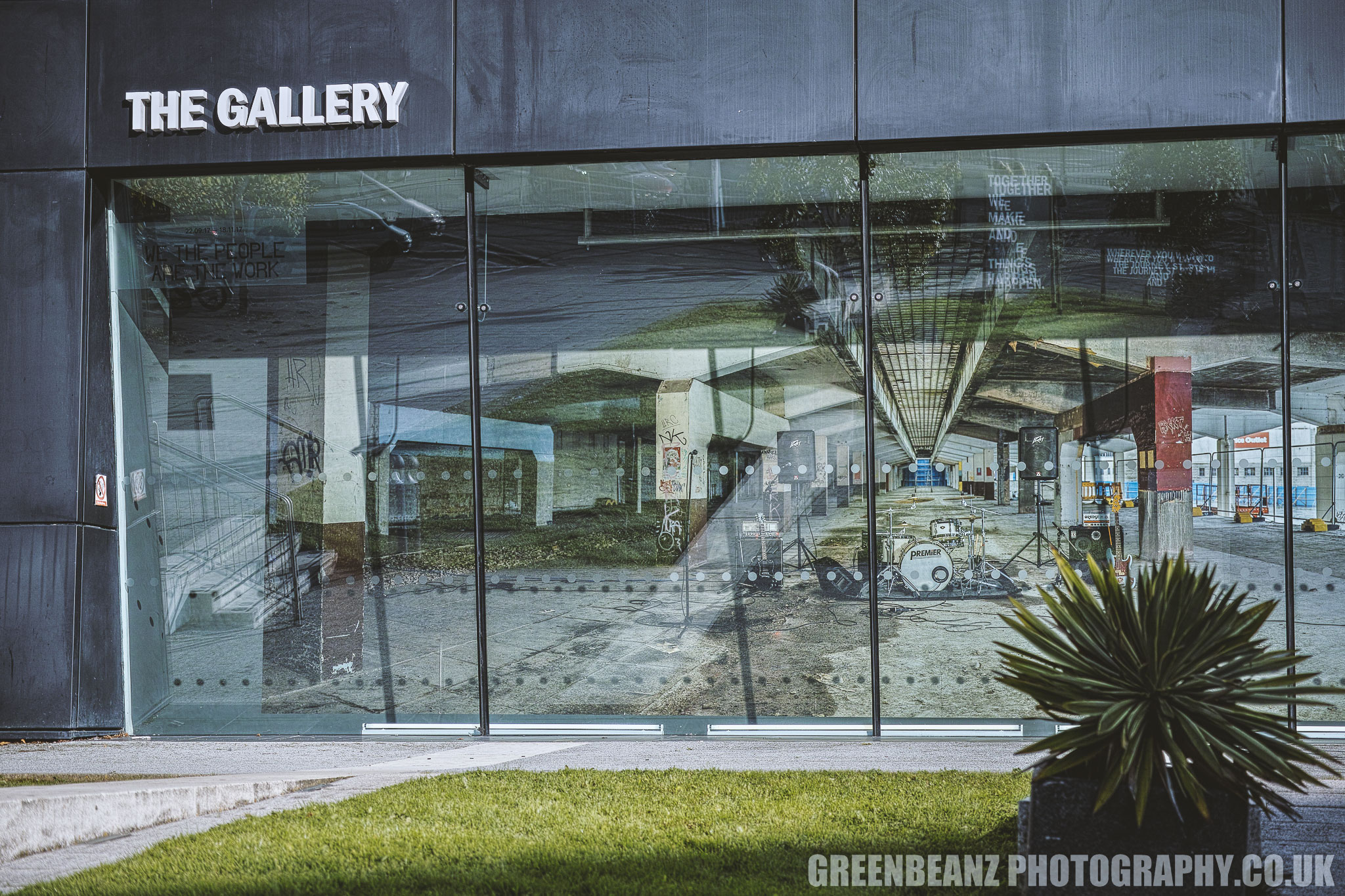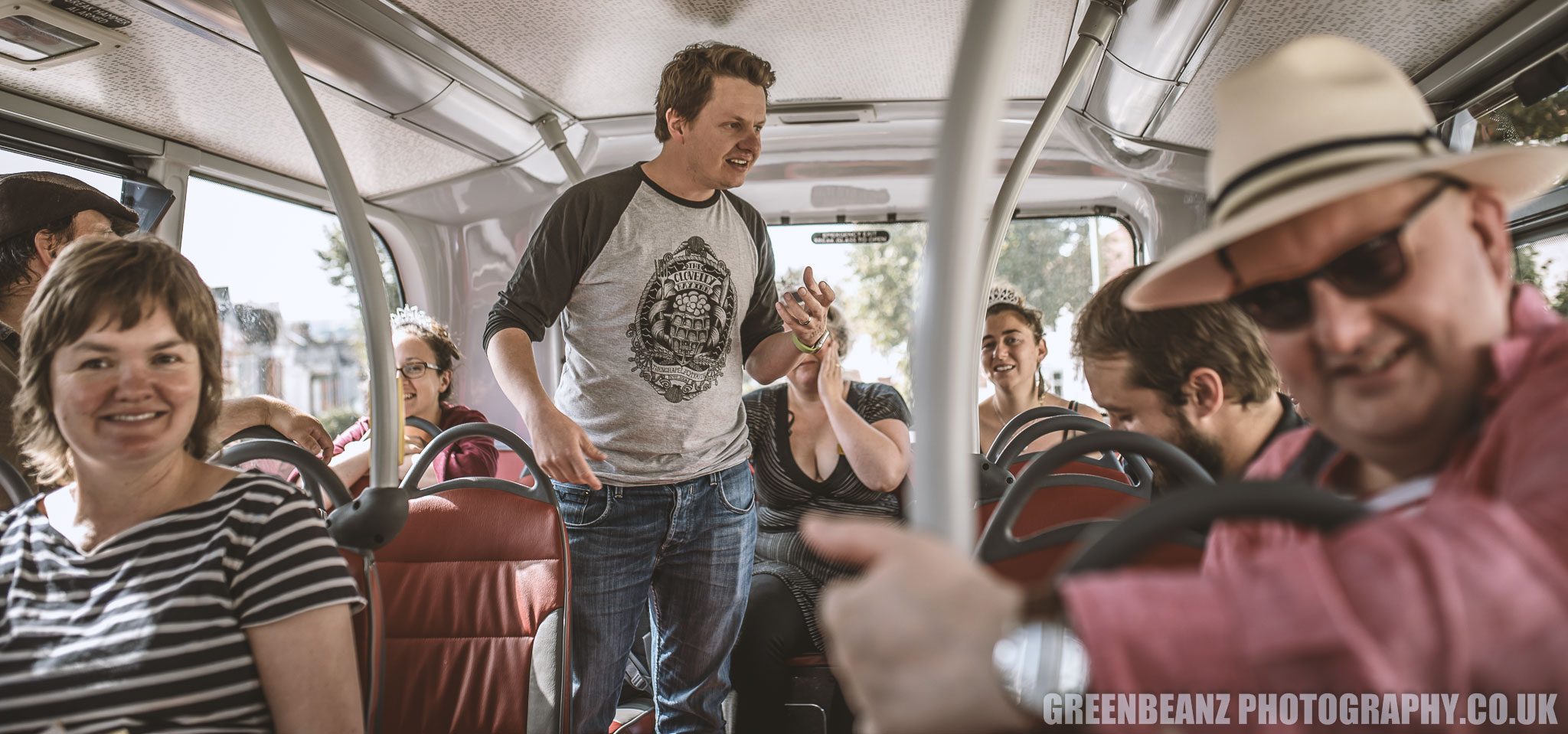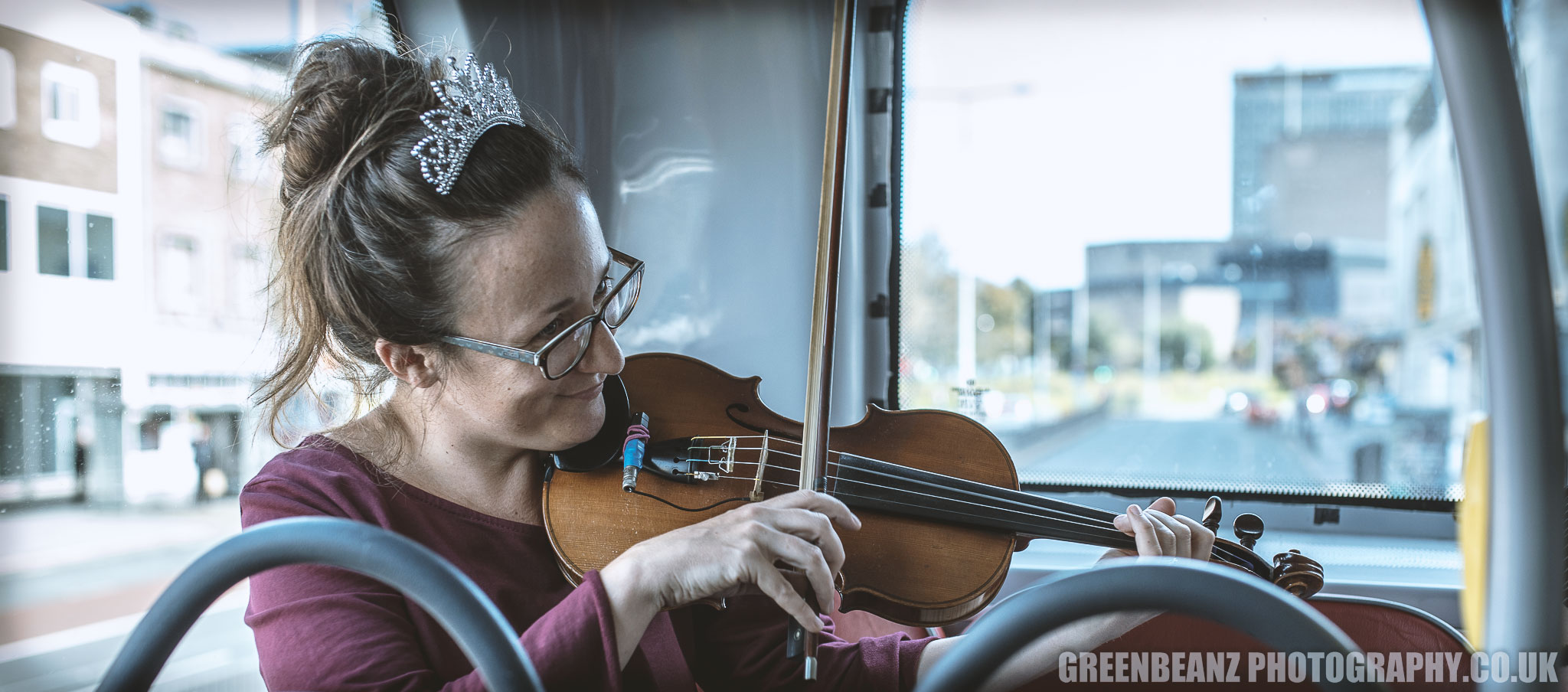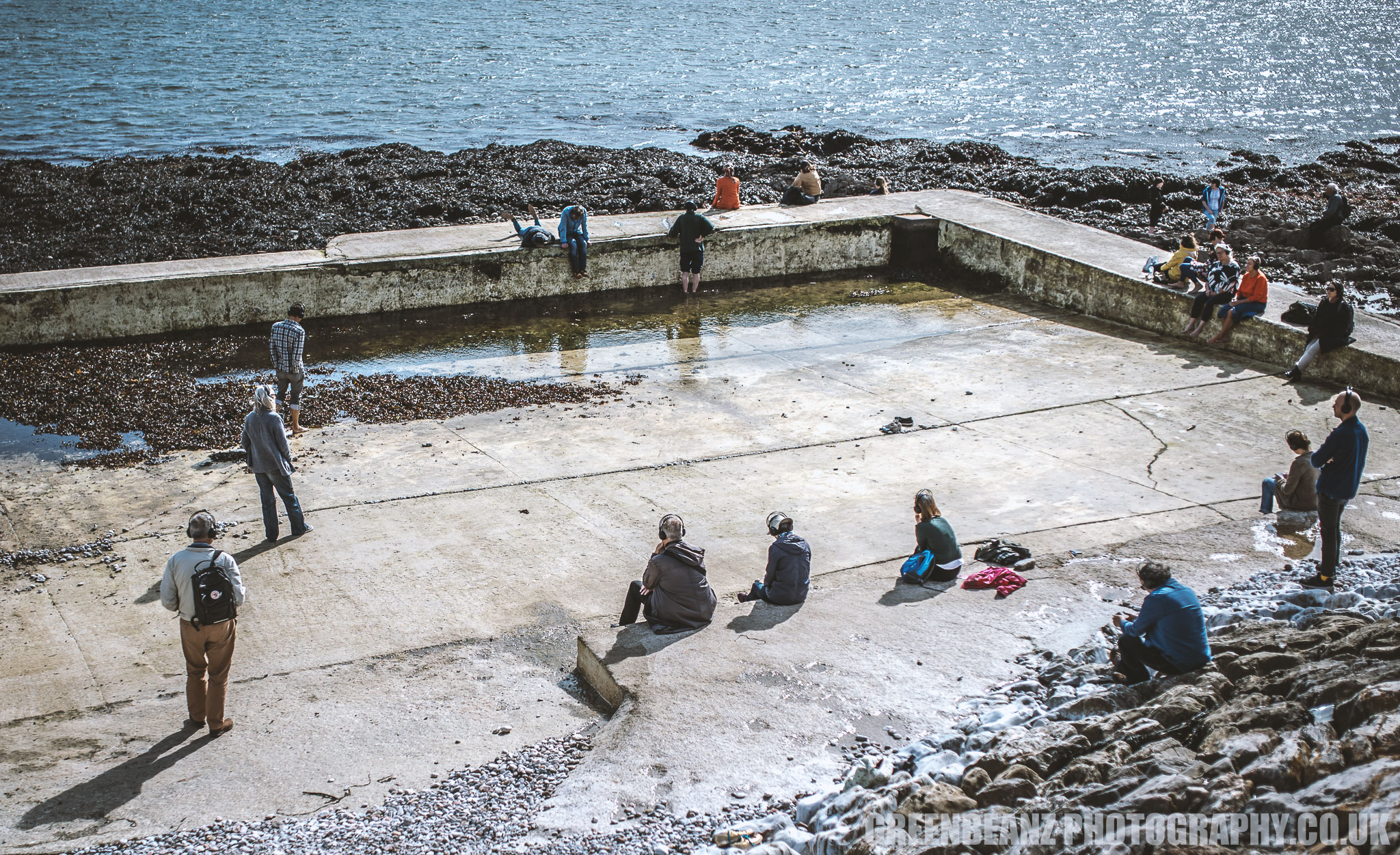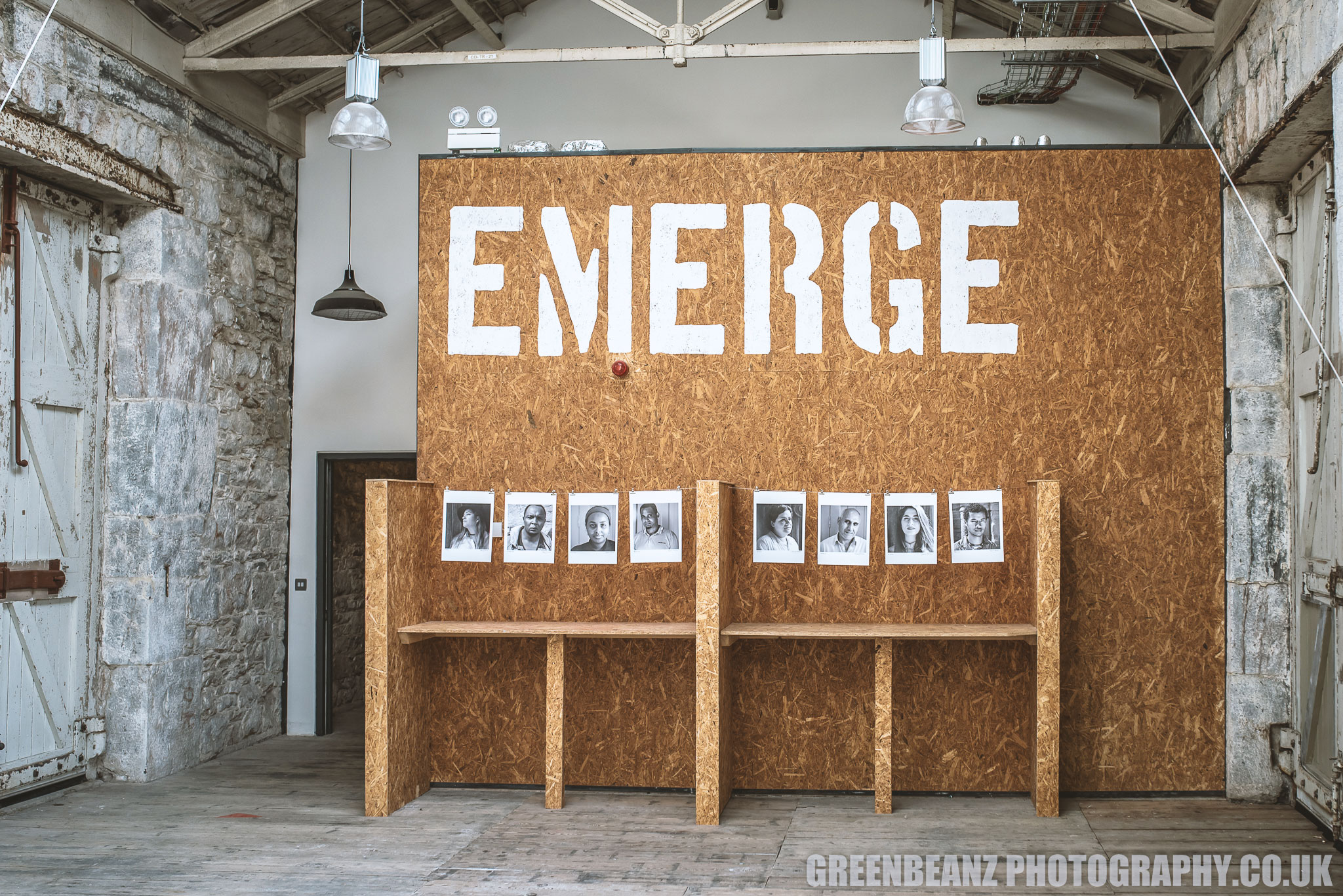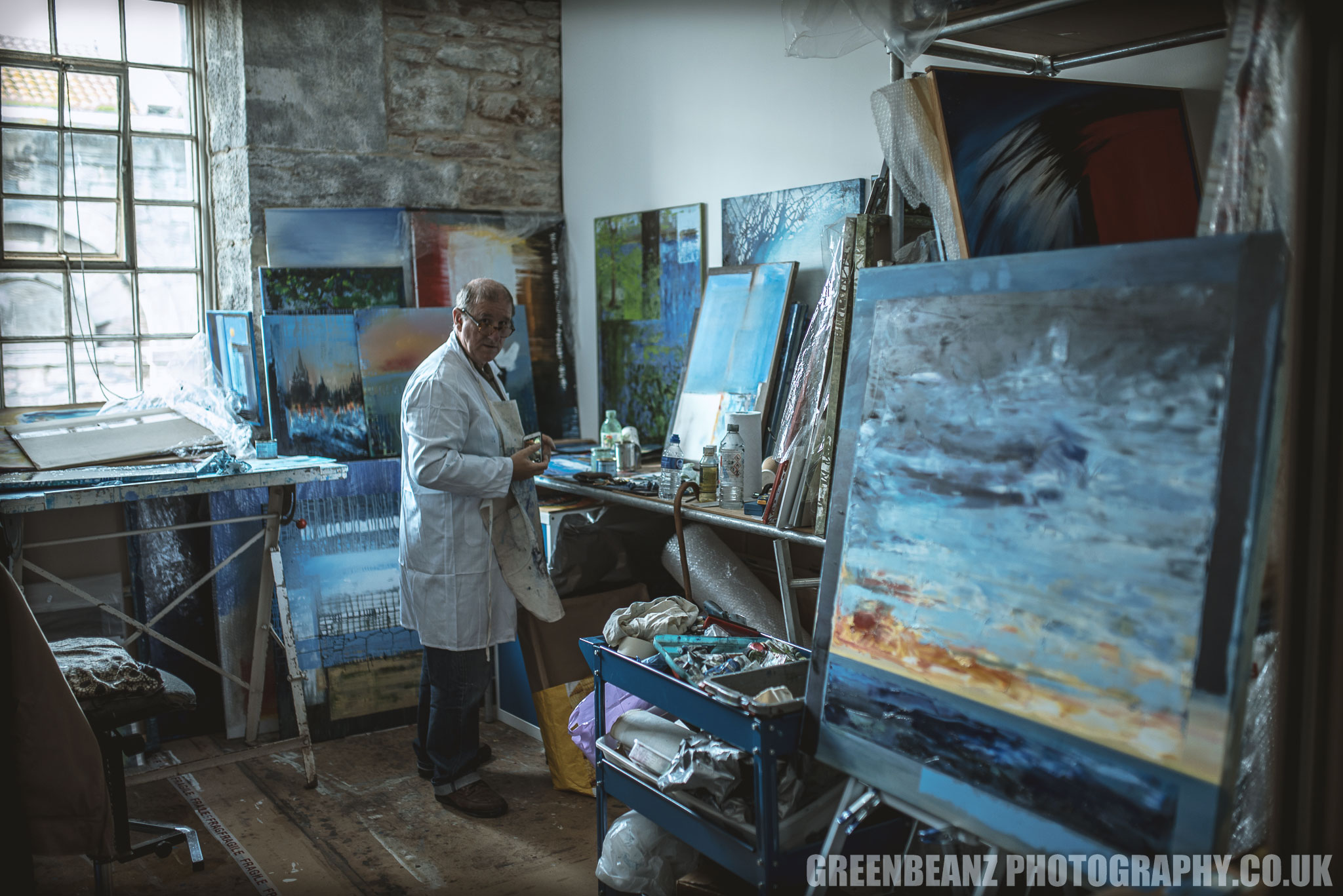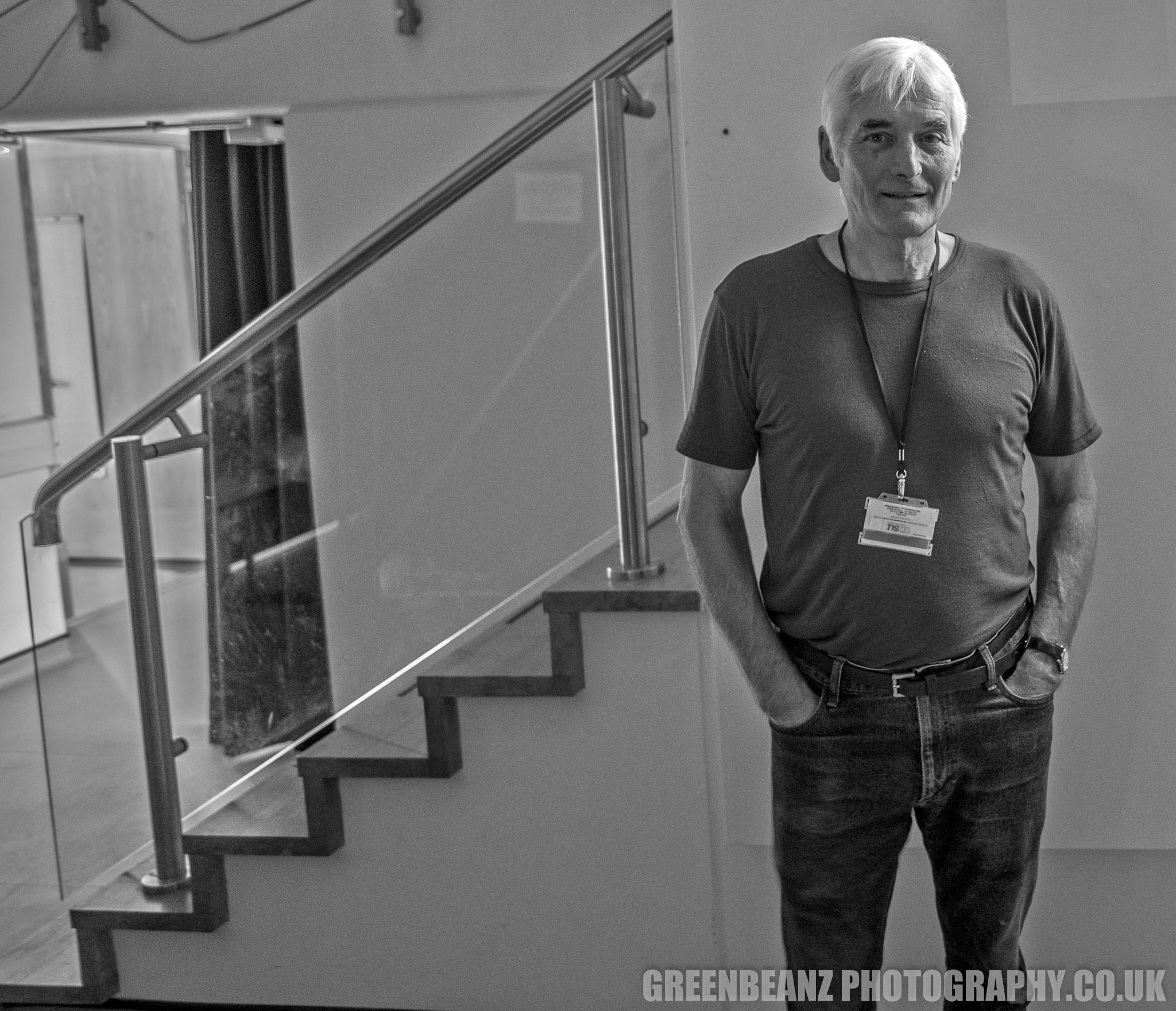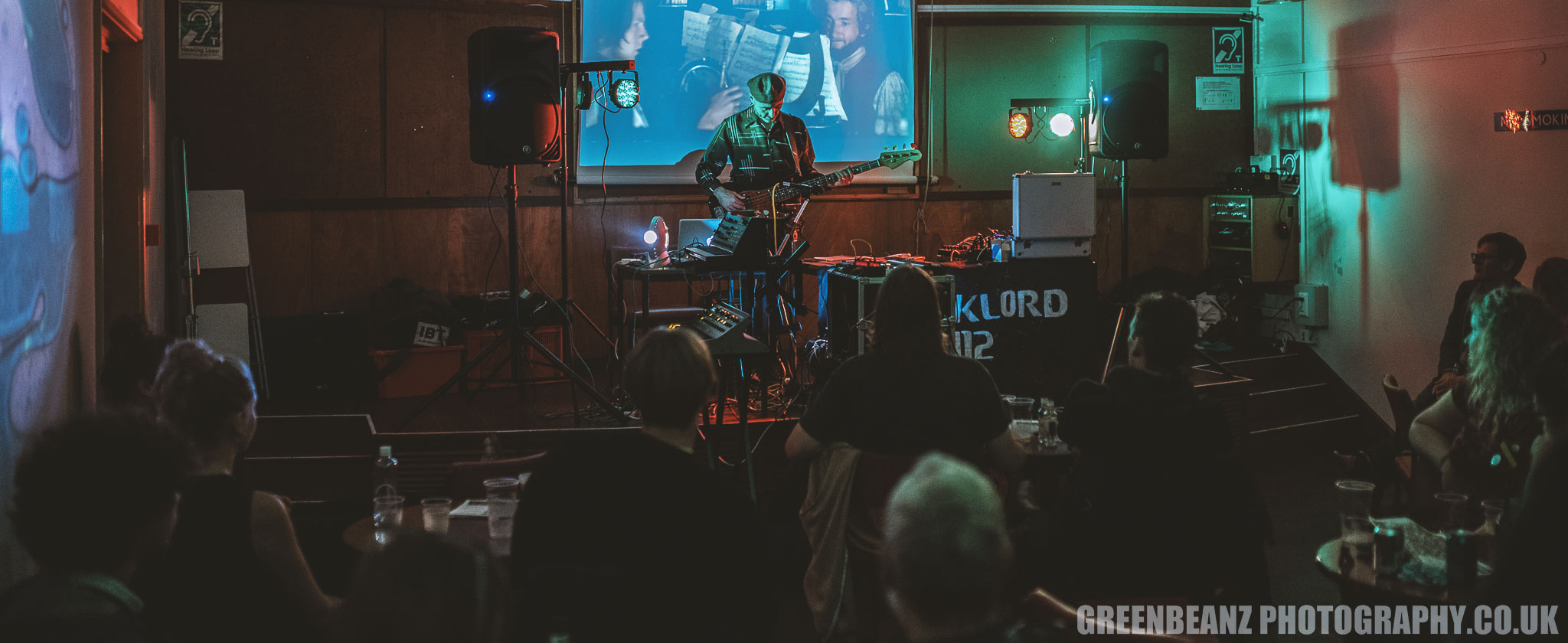The Time is Always Now – Artists Reframe the Black Figure – The Box 2024
St Lukes – Double Consciousness
Re-framing can be a loaded term in a gallery, a space into which we bring our own mirrors of reflection and personal context. Curators and the institutions and spaces in which they hang work, are just one of the lenses that can distort our perception, but in an overlapping kaleidoscope of boundaries and viewing methods, it is often our own imperfect inner eye that shapes the experience of the art laid out before us. The contextual reimagining of Black figurative representation by 22 Black contemporary artists here in The Box and it's sister gallery space, St Luke's, does much though to lift detail from previous pejoratively cast shadows, and offer a sense of the new with perspectives that have been under represented, erased, missing or created with an often distorted and superimposed view of Black subjects from outside.
Ekow Eshun’s ebullient effusive voice, familiar to us from print and TV, enlightens us with a collection that runs the entire gamut of human experience. Life, Death, Sex, The Body Politic, Identity, Belonging and Power. His curation here is as insightful as his cultural analysis. It is a pity that bright presence is not reflected in the staging here in St Luke's. There is a strange lack of light in huge swathes between the lit pictures and this shadowy ambience, if this is a conscious decision, it is both distracting and disappointing in a room full of so much colour and boldness. I think it has more to do with the altar window being blocked and the lack of overhead lighting, but it is a shame. There is nothing in these works that would not be less impactful if the spaces between were better lit.
Walking clockwise the first painter to enlighten the viewer is Kerry James Marshall. His painting 'Nude (Spotlight)’ 2009, is a striking work that many have said recalls Edouard Manet’s 'Olympia'. I have to admit my first instinctual reaction also made me think of Olympia, but to reduce Marshall’s work in such simplistic terms, I now realise, is a mistake. The subject here does not adopt the same pose, nor does she gaze at or interact directly with the eyes of the viewer. Her feet are hidden, there is no cat, no shoes, nothing adorning neck or wrist and even the model Laure, whom Manet had painted twice before in 1861 and 1862, in ‘Olympia’ posing as the black servant with a bunch of flowers is absent.
Here Marshall’s reclining model is rendered in thick black acrylic that glistens like the iridescent spill of galaxies against an inky black night sky. Something no photograph of the work will ever capture. The luxurious silk white sheet beneath the subject here submits to her weight and leaves mint highlights in folds, reflecting the turned back lining of the fabrics that preserve her modesty. Staged under a literal spotlight the reclining nude is illuminated and is a brilliant introduction to a collection that seeks to redress the invisibility of black bodies and invite the viewer to deconstruct previous notions of blackness in art.
The encouragement to question is continued in the Untitled ‘Mask Boy’ 2014, in which the subject has removed his ritual mask and is gazing at himself in a mirror. Marshall is not providing all the answers, he is reminding us to question the narrative and not mistake our own preconceived ideas as neutral readings. We do not see what he sees. Neither the artist or his subject. We see what they both want us to see, but also what we want to see.
The mirror that reflects his image is unseen by us and smashes apart the idea that the portrait itself is somehow just a reflection of society rather than revealing the unique, highly prescriptive individual viewpoints it really presents us with.
‘Portrait of a Curator’ (in Memory of Beryl Wright) 2009,continues the introduction to this show, with a kind of early baptism in this former Church that requires a shedding of previous held comfort blankets to even begin to understand what has been attempted. Beryl Wright was not only the first African American Curator at the Museum of Modern Art in Chicago, she was also somebody who because of the intensity with which she threw herself into her work, and more significantly the abuse and resistance she encountered among a blindingly white establishment, ultimately ending up killing herself. Here she stares right back out at you. Confronting you with the difficulties of curation bending back in sympathy with the single flower in a glass. The stiff white cream of her coat, there again in the reflections on the spectacles.
The final Kerry Marshall painting Untitled (Painter), 2009, deconstructs the process of painting itself. Examining himself in the role of the painter here, it shows a female painter and behind her a colour by numbers version with which we are invited to examine and think about colour and choice. Even the previously widely accepted view that modernism spoke for and represented everyone in it’s rejection of commissioned royalty, is questioned. Interrogating religious scenes and doubting Gods, was not enough. It is as though that was all that was required to speak for anyone, including, most importantly, the global majority, in movements that saw greats like Picasso lauded for appropriating primal masks of a world he did not only not fully understand, but had no lived experience of. Marshall may be an obvious choice, but it is here the right choice, a modern iconic Black artist to begin re-framing the black figure.
If Marshall is the intellectual foreword that introduces this collection, then Amy Sherald surely represents the emotive first chapter The calm flatness that personifies her work is an invitation to spend time and engage with her subjects. ‘A Certain Kind of Happiness’ 2022 has a flawlessly executed neutrality that extends far beyond the grisaille skin tones that are a recurring feature of her later portraits. Much more than just a monochrome underpainting in preparation for washes of colour, for Sherald this device represents not just a separation of race and colour, It is also a technique that like so much of the work in this exhibition acknowledges that photography (long before colour film) represented the first real subjective and substantial representation of the black figure in an art world that had hidden, distorted or simply ignored it’s ubiquity.
Marshall is acknowledged by Sherald as a big influence but here in the painting of a subject in a white dress with a triple green runway stripe in the centre of it’s pattern, the standing figure locks you in a gaze that will follow you around the space. No ambiguity of engagement here. Whilst texture is reserved for the wonderfully rendered hair, the earrings bejewelled edges and the golden zip, the flatness of everything else gives you the viewer space in which to read the models own narrative.
The face, the props, the coloured backdrop all reflect in Sherald an artist not only at ease with herself but as the recipient of a heart transplant 12 years ago, someone who understands how cluttered life can become and why removing distractions really matters. That optimism is so perfectly realised in ‘A Midsummer Afternoon Dream’ 2021, a large scale rendering of living in the moment.
You can almost feel the breeze stirring amongst the grass and blowing back the sunflowers and loose hair. That familiar feeling of centred stillness is still there with the small distant house in the background behind the little white dog in the basket and the leaning against the lemon yellow bicycle. The dog may be looking off painting but the subject here again holds you in her gaze, the hats shadow allowing her to look directly at you, the soft natural lighting of a sun diffused by clouds in a raspberry blue slushie sky, rendering her monochrome skin as softly as the touch of a breeze wrapped in the pool blue of a dress that ripples around her.
After painting Michelle Obama in 2018, (an assignment she describes as something her life up to that point had been preparing her for) she then follows that in 2020 with a painting of Breonna Taylor, declared by some as the most important painting of the 21st century. Before all of this though she had painted ‘She was learning to love moments, to love moments for themselves’ 2017 the lead image in this exhibition that adorns the exhibition text and advertisements. It’s title is taken from Pulitzer prize winning poet Gwendolyn Brook’s ‘We’re the only coloured people here’. In response to the squeeze of a lovers hand when watching a technicolour film that in the darkness of a cinema relieved the black couple of the white world’s gaze for a brief interlude, the line seems to have inspired Sherald to leave a similarly indelible impression with the subject adorned in a polychromatic stain glass multi-pattern of bright colours, her hand pressed against the nape of her neck, perhaps steadying her stance or maybe recalling the touch of another.
Lorna Simpson, who has used the luminescent qualities of film and video herself again focuses attention through the historic lens of photography, although not here her own photographs but the found images cut from ebony magazine and other historical sources. For sound artists the exploration of found and already recorded sounds holds none of the suspicions of cheating associated with collage and repurposing images. The auraculous imbues us with a sense of wonder but the visual equivalent has too many easily associated meanings, and it is hard to remove from them in the same way Pierre Schaeffer and the following sound artists have, by removing key parts of the original sound or warping them into something entirely new and novel. Like the huge blue glacier landscapes Simpson has created here the use of blue ink is key in obscuring and pooling. ‘Rope Chain’ 2021 itself contains what looks more like a giant floating glacier than a double exposure with the face now softened by the heart shape rending apart of its original outline, the rope necklace now mooring it in a kind of harbour of melancholy with the bravado of the uniform held at bay beyond an invisible breakwater.
The organic ocean green underbelly of sea blue ink is more apparent in ‘Blue Tulip’, 2023 in which the wave of ink rolls over a beach underneath the original photo mount at the bottom of the painting. And it is a painting, all be it one that uses ink on a large scale and takes a screen printed piece of gessoed fibreglass board as its starting point.
Claudette Johnson, the first British artist here, again uses blue and photography (here the work of South African Peter Magubane) to portray a narrative in an entirely different way. ‘Kind of Blue’, 2020, where Simpson floods the work right up to the edges of the frame, and Johnson leaves the unfinished as a kind of refusal to confine the subject. Like Miles Davis’ classic album of the same name, there is an improvisational element at play here, a real sense of collaboration. In Jazz, what you choose not to play, leaves the space for others to bring their own interpretations into the foreground, and Johnson shares the same courtesy but here for the viewer, and is happy to leave the paper spinning long after recording her thoughts have finished.
‘Standing Figure with African Masks’, 2018 re-appropriates Picasso’s own borrowing in ‘Les Demoiselles d’Avignon’. Johnson documenting not only the figures relationship with the African masked ancestors behind her, but also Johnson’s own relationship to African art and the European tradition. Here the figure is finished, the pastels pushed and rubbed into robust but tender service while some of the masks are left unpainted, perhaps as a reference to this unfinished dialogue or maybe the beginnings of a rejection of Picasso’s motives or deployment of African art in his own works.
Representation is a slippery beast and grappling with it, using what at first looks like fragmented re-assembled collage, but are actually oil paint, pastel and gouache, on paper and canvas re-imaginings of figures, is Nathaniel Mary Quinn’s mission here. Abstraction can be seen right back as far as the mannerists but Quinn’s noisy juxtapositions are alive and buzzing with the energy of modernity. The city, music, fashion all vibrate unable to be kept still within these compositions. Like Hockney’s perspective studies it addresses the multiplicity of visual experience but more importantly it accepts and makes explicit the fact that representation is not just linear we change what we look like all the time and then into that writhing mix you must add the prejudices and preconceptions of both viewer and artist, Quinn does not tell you how to look. He is interested in reality and not some flat varnished stylised hygienic overly prescribed acceptable version of it. Taking his mothers name ‘Mary’ to ensure she was featured on his college / university degrees and exhibition walls, exemplifies this insistence on embracing the chaos of reality, the grotesque and heartbreaking and bizarre along with the beautiful and life affirming. In an age where identity is often mistaken for the desire for attention, Quinn’s work puts that dichotomy on the walls and is not afraid of the uncomfortable truths and conversation within ourselves it may trigger.
Walking on toward the altar/ pulpit end of this former church, resting in semi-darkness is Wagnechi Mutu’s ‘This second dreamer’, 2017. A beautifully polished cast bronze head and neck of a Black Woman with unpolished braids rests on a wooden block pillow, positioned in the gallery space so that you can walk 360 degrees around it. There is great synchronicity in it’s placement before the temporary blind obscured stained glass window. Religion is a kind of waking dream, nightmare, that many believers eventually wake up from after all.
Muti herself has show herself to be especially alert and awake to possibilities with her afro futurist re- imagining of the Romanian Constantin Brancusi’s marble wonder ‘Sleeping Muse’, 2010. While Brancusi’s egg like Marble original seems only lightly touched by the chisel, it’s features soft and fleeting like a swiftly forgotten dream, (the brass castings are no less radical but lending through reflection and shadows the head a Kirk Douglas like cleft chin, and a shine and weight that along with the lack of a neck allowed the form permission to float), Muti has left her hand’s mark in the far more grounded and delineated head here. The sculpture presented on raised legs almost like a sacrifice, but rooted in the here and now much like Thomas J Price’s monumental ‘As Sound Turns to Noise’, 2023 the centre piece in the Box main building’s atrium.
The dialogue between Brancusi, Ezra Pound, Duchamp and Man Ray is rooted in the exploration of unconscious thought, the lines almost preparatory and ripe for interpretation, but Muti has lost some of that in remixing that iconic original. Potential has been replaced with intent, but I think in it’s low key lighting the opportunity for reflection in both a literal and philosophical sense has been denied.
The covering up of the East Window, even with the newly commissioned Leonor Antunes ‘Sibylla’ replacing the original Nativity scene is understandable, but unfortunate, in creating a false sense of foreboding in a building that has been lit with natural light through glass since 1888.
Noah Davis’ ‘Black Wall Street, 2008 though is at home in this shadow strewn secular space. A nightmare on canvas, this powder layered rendering of the Tulsa race massacre of 1921, each stratum suffused with the bruised stillness of trauma, with anguish itself on hold in the kind of polite purgatory preserved for the true horrors of the uncomfortable truth.
Kenyan British artist Michael Armitage’s ‘Kampala Suburb’, 2014 is charged with erotic intent, despite being what he calls ‘a tender painting that was about an ordinary scene of a couple of people in love, having a kiss before bedtime‘ there is nothing latent or concealed in this image. The sexual charge is manifest but does nothing to remove any of the empathy he wishes to allow the viewers to have with two people in love, harassed and threatened with execution in their native Uganda.
The figurative image with a background frieze of executions decorating the wall behind them packs more of a punch in its simplicity than the rather crowded and hallucinatory ‘Conjestina‘, 2017, in which the female middle-weight boxer is cast among her tormentors, highlighting the exploitative local media’s misuse of documenting in it’s portrayal of the fighter when battling her own mental health issues. Originally shown at The Chapel at The South London Gallery in 2017, a space light by a huge ceiling which is 80% skylight, Armitage’s work here is muted. Ironic considering his asking ‘Can an art space function in the same way as a chapel?’
Well no, not when you close the curtains. The vivacity and vibrance is lost with the flat suffused daylight replaced by directional artificial substitutes, which in an exhibition all about revealing and bringing out of the shadows is sad but only serves as further testimony to the strengths of the work that that shine, regardless.
The Jennifer Packer work ‘A stone’s throw’, 2021 is all about the clever trick of using a colour field to obscure and submerge a subject rather than letting it remain as a device to help us focus solely on the figure itself. The edges of the seated figures profile are swallowed by the artists desire to preserve some distance and anonymity, the privacy cherished but the inner life revealed in a painting that peels away description and marks of identity.
‘Untitled (K. Drew)’, 2019 follows a similar if somewhat differently executed method to render the subject, here laying on a bed, as a vague an apparition as the line of her smile. No more permanent than the slowly rising indentations that her body has left temporarily as impressions on the bed.
North Hall – Our Aliveness
Thomas J Price’s ‘As Sounds Turn to Noise’, 2023 a huge bronze sculpture created from an amalgam of 3D scans provides a magnificent centre to this exhibition. A fulcrum from which all the individuals, real or imagined in St Lukes and The North Gallery pivot.
North Gallery – Our Aliveness
It is somewhat surprising that Nigerian born New York based Toyin Ojih Odutola who before autumn of 2013 had made her indelible marks in ballpoint pen ink and pencil, chose to create the fictional characters from the invented UmuEzeAmara clan using soft chalk and dusty black charcoal. ‘The Adventuress Club, est 1922’, 2016, depicts four women tightly cropped in a pose not unlike a group shot of supermodels in a vogue fashion shoot in front of a large picture window. It hangs alongside ‘The Marchioness’ and ‘A Grand Inheritance’ both also painted in 2016 and creates a solidity of narrative that defies the crumbly dry medium it was created with. Seated figures in all three works lounge decorously, in a kind of performance surrounded by objects, heirlooms and paintings. Odutola herself has said that such a solid permanent state of wealth seemed fantastical to her growing up.
You feel that these fictional characters are so believable and well created that were the artist to turn her skills toward writing she could draw you into the pages of a novel as well as John Updike makes you want to visit a gallery when he is writing about art.
From fiction to reality Jordan Casteel’s ‘Yvonne and James’ 2017, sees an elderly couple in Harlem, New York, gazing directly at us making us feel like a candid street photographer being spotted in the middle of depressing the shutter. The gaze is a constant theme returned to in figuration, but it becomes an even more explicit subtext here in this exhibition where the act of looking itself is transformed from the act of making into the act of seeing in a collection with which we are encouraged to approach without assumptions.
This is the second of three paintings of James Casteel has made, the first ‘James’ 2015, has the subject perched on a stool his left foot resting on what looks like a tolex covered 1960 Fender Vibrasonic combo amplifier. Wheat yellow like the wallpaper table next to it, the amp is like a footnote she has used in explaining the context here.
The punched out windows behind lining Malcolm X Blvd, creating a stripped down rhythm within the restricted colour palette, are reminiscent of frets or fretboard markers on a guitar neck, all telling you how real James in his considered threads is as he meets your gaze. Reminding us that he is as important in this community, as the soul food restaurant behind him. Just as nourishing, his own particular soul food is sold on vinyl and CD. Casteel’s familiarity with the subject and community depicted allows us to smell and here the street here and feel the love entwined between the couples interlocked fingers in the joint portrait painted two years later.
Njideka AkunyllCrosby’s large ‘Still you bloom in this land of no gardens’, 2021 hangs at the end of the main gallery. The artist sat outside her home, youngest child on lap, looks out at us and invites us to engage with the layers of meaning contained within. Hanging on the wall inside her home a portrait of her mother, the foreground on the left peopled with a photo collage of her Nigerian family , models , athletes, musicians etc, cut into the silhouette of plant leaves the plants on the white and the main subjects and mid-ground realised in beautifully flawless acrylics.
It is about more than technical mastery of her mediums. The shiny patent shoe and the general taming of the light is masterful but then you look at the wonderfully florid swirling brushwork creating the pattern on her dress and you can not see where it ends and the floor begins. The grey deck again is overlaid with the blue mat and the transience of place, belonging and family all sing together in a celebration of communality so much other art seems happy to deny.
The positive, happy unabashed tributes to empathy and connection continue in Henry Taylor’s ‘Right hand, wing man, best friend, and all the above’, 2023. A eulogy to the sadly departed Californian painter Noah Davis whose dark foreboding painting of the Tulsa Race Massacre hangs in the St Lukes space across the square. In this painting Taylor himself sits next to his friend on matching chairs, at ease and mirroring each other, looking like friends for whom minute gestures can hint at and convey little asides and stories shared together that outsiders will never get to fully inhabit.
Hurvin Anderson removes so much of what his original photographs capture that you are left with what is almost an abstraction. In ‘Peter’s Sitters II’, 2009, those blocks of colour echo that cubist starting point the walls corners and the barbers alcove missing but in ‘Peter’s Series: Back’, 2008 much more detail is retained and you feel like the barber looking at the client as though you were walking toward a tube train, the back of people’s heads your whole vista, before meeting your regulars eyes in a unique relationship where you see them as they see themselves, and you too, reflected in the mirror as they let indiscretions and telling asides drop with each lock of hair leaving their head and falling onto your floor. This short time period, each month or ten weeks, set aside like a therapy session in which they sit on the throne, their heads bowed and become the focus of your and their attention, in what may be an entirely secular, but not ritual free secular life.
Chris Ofili’s ‘Christmas Eve (Douen’s Dance)’, 2007 again takes photography as it’s starting point. Here Malick Sadibe’s “Nuit de Noel” (Happy Club), 1963 which has revisited since in ‘Mali Memory (Tea Dance)’, 2014. Ofili one of the YBA’s winning the Turner Prize in 1998 for his the exhibition containing his painting ‘No woman, no cry’, 1998, his tribute to both Stephen Lawrence and the courage of his Lawrence’s mother Doreen.
‘Douen’s Dance’ contains none of Ofili’s trademark dung or glitter and instead presents a very able colourist reinterpreting Sadibe’s photograph as the spirit manifestation of the unbaptised, referred to as Douens in Trinidadian folklore. Nobody expresses surprise at the huge evolution in Picasso and Matisse’s career. The radically different styles and periods used instead to mark chapter’s in their life. Ofili clearly moving on in both location (he now lives in Trinidad) and style continues to push himself into new spaces and the work is better for it.
A little closer to home Truro based Denzil Forrester recalls his time spent in London Dub clubs with ‘Itchin and Scratchin’, 2019 his towering depiction of club goers in almost worship like revelry before two huge PA speakers. The energy of his original sketch (often done in clubs lasting just the length of a track, and then extended like a dub mix afterwards) is still present here vibrating among the deep blue sub bass, as the figures swarm and merge, like the delay ridden sound collages that populate the aural soundscape of dub, that endlessly original iteration of reggae whose timeless reverberations pre-echoed Techno and the DJ Culture that followed.
Music and sound are a huge part of any culture and a grounding insistent and all embracing theme that runs through my own personal and professional life, so it is always interesting to see it presented so explicitly rather than remaining in the background. Communality is again here personified in dancing as one, to the kick drum, the heartbeat that unites us all.
Hurdle Gallery – The Persistence Of History
Kimathi Donkor has two paintings on show and they both have an incredibly cinematic and biblical quality to them. ‘Nanny of the Maroons’ Fifth Act of Mercy’, 2012, on the surface seems to be a straightforward depiction of the Jamaican rebel leader who forced the British into a truce. There is though the shadow of local Plympton born Joshua Reynolds ‘ Portrait of Jane Fleming’ in the pose, something Donkor has spoken of. What is not so remarked upon is that the origin of the pose the step-daughter of a plantation owner has adopted is taken from the celebrated marble statue of antiquity ‘Apollo Belvedere’. Apollo is of course male and is missing both bow and arrow but is clearly standing after discharging his weapon. Donkor reinstates the weapon in the sword in Queen Nanny’s hand and in so doing acknowledges her power and resilience in vanquishing a fallen Englishman who could be mistaken for Reynolds himself. Could it be Jane Fleming herself next to the fallen Brit, pleading for mercy? Donkor is the kind of storyteller that makes you want to put off the final page turning for ever, when the descriptive power of his painting is so lucid and luxurious, his long languid lines sharply delineating sharp dark foregrounds against golden age of Hollywood painted backdrops that remind us of how film-makers, like historians, are constantly guiding our eyes telling us not just how, but where to look.
‘Harriet Tubman en route to Canada’, 2012 is even more filmic. It would be hard to endow such a heroic icon of freedom with any more of a legendary status than she has already earned, and so Donkor settles with revealing her as a human with all the flaws that entails.
Titus Kaphar’s jigsaw like cutaways address absence of the black figure in art ( other than usually in positions of servitude, poverty or powerlessness) by removing White European subjects from European portraiture and revealing black figures behind them. ‘Seeing Through Time 2’, 2019 cuts out the Duchess of Portsmouth from Pierre Mignard’s Louise de Kéroualle, ‘Duchess of Portsmouth with an unknown female attendant ‘(1682) and reveals the head and shoulder of a black woman in her place, the black page child now no longer in a place of servitude or as a fashion accessory, a possession, but reunited with someone who could be family, maybe even her mother.
Barbara Walker has said that she is concerned with ‘...how you represent erasure?’. It is a theme this entire exhibition tussles with again and again. She too revisits Pierre Mignard’s ‘Louise de Kéroualle Duchess of Portsmouth ‘ 1682, in ‘Vanishing Point 24 (Mignard)’ 2021. Walker literally pushes the adult figure back with an embossed impression, highlighting and bringing into the foreground the pencil drawn child. She is like many of the artists here giving the silent black figures from historical European paintings not just agency but a real voice, resurrected for this century, subjects for the here and now that we are all now once again engaging with on much more nuanced and fair terms. I understand why, but it is a shame we could not have had one of her wall drawings or paintings here to demonstrate how powerfully Walker has made the case for visibility and reinstating the black figure in it’s rightful place at the centre of art and not just some ancillary adjunct, an afterthought addled by affectation and avarice.
Pencil of course is the medium most closely related to erasure. Whether it be intentionally by rubber and putty or smudged and distorted by errant elbows and purposeful thumbs. For Barbara Walker it is key to understanding the magnitude of the themes she addresses with her work. She deploys white, absence, erasure and embossing as a signature technique. To signify loss, a desire to forget, to represent exclusion, as a means to help the viewer refocus, to add by removing.
The hierarchical anomaly of the three wise men usually including at least one black man is there in what must be one of the most revisited scenes in Renaissance painting , with versions of ‘Adoration of the Magi’ rivalling contemporary covers of The Beatles ‘Yesterday’. Walker highlights the Magi in both Vanishing Point 9 and 26 with ‘Vanishing Point 26 (Geertgen), 2021 revisiting the early Netherlandish painter Geertgen tot Sint Jans ‘Adoration of the Magi’ (c.1480-1485). The featured magi King, the beautiful, King Balthazar of Ethiopia has often been represented in Spanish pageants by white men in Black face. Balthazar was the king who gifted the infant Jesus Myrrh indicating his awareness that the child would die as King of the Jews.
Marking the Moment (2, 11 and 1 on show here) are all graphite drawings of old masters overlaid and obscured with Mylar, with a small cutout circle highlighting a now refocused black figure underneath.
Turner prize winning Lubaina Himid, the first Black woman to win the prize in 2017 and the oldest, 63 at the time, is represented her by her large painting ‘Le Rodeur: the Exchange’, 2016. This surreal rendering of 5 figures using acrylic on canvas displays her skills and background in theatre and curation as an insistent and impassioned storyteller. Pioneering the promotion and presentation of once excluded Black Women Artists for decades, Himid here again brings hidden and untold stories into the foreground with a painting that haunts in it’s coded dream-state remembrance of tragedy.
The French slave ship Le Rodeur murdered it’s human cargo of slaves after an eye disease contaminated each prisoner and rendered them blind and unsellable. Weights tied to their legs and thrown overboard, their slow death whilst tumbling into the gloomy depths is made even more horrific when a French report into the incident insisted that the slaves had thrown themselves overboard and drowned because of homesickness. Sicker still it was discovered that rather than waste money on feeding worthless blind slaves their murder in the ocean was compensated for by an insurance payout to the boats owners.
Himid’s painting with the legless bird headed figure and a figure holding out what looks like a piece of fabric is uncomfortable even without any prior knowledge of it’s inspiration or part in a series by the artist dealing with this most tragic of crimes. Nobody seems to know what is going on and such a confused and delirious lost reaction is surely the only way one could react to such an incident.
The British used the incident to take the moral high ground but it would still be another 11 years before they abolished slavery themselves. Empires and the west were run on the suffering, blood, sweat and tears of black slaves, hidden like much of their history and art, in ships hulls. Lubaina Himid has forged a career in exposing the hidden place of Black people in European history. For centuries obscured, bartered, owned, marginalised or ignored.
Ghanaian born Godfried Donkor has created work that deals with this relationship between Europe and Africa, America and Africa, and journeys of a different kind. In the case of Bill Richmond the journey from slave to Boxing icon, but as in much of his work there is much more nuance than that of the comic book hero or religious saint. His work questions conventionally held beliefs that elevate masculinity and physical prowess, the ability to entertain as a modern replacement for the strong and stamina full slave or performing servant. The modern day disposable gladiator.
Richmond was after all, a pioneer in boxing on the back foot. His counter punching excellence was rooted in intelligence not endurance. His reputation as a trainer does not eclipse his journey from slavery to freedom, but is often forgotten in an attempt to oversimplify a remarkable man.
Both aspects are represented here in images of both teacher and pupil. ‘St Thomas, up to scratch’, 2019, sees a haloed Tom Molineaux, pupil of Richmond, hands up in a field with a blue line drawn ship drawn over his feet. ‘St Bill Richmond, the black terror, 2019’ sees another haloed hero with the application of gold leaf elevating these boxers as Saints in a new kind of byzantine like iconography. The comic book influences are there to see with boxers and sports people in general adopted as a kind of shorthand by Donkor to make us think about representation in an entirely new context.
This is a show with real depth and originality. It begins to redress the balance and opens our eyes to how under and misrepresented black figures have been by white artists for centuries. It has gone to America now and will continue on it’s journey to helping remove the scales from many eyes, and I for one feel incredibly lucky to have enjoyed and learnt from it while it was here in the city.















